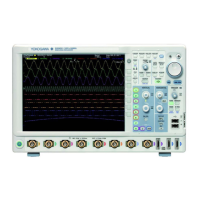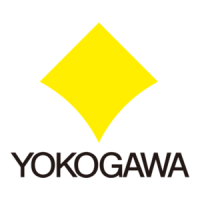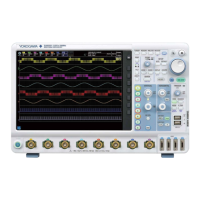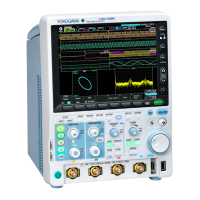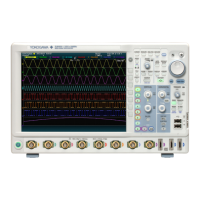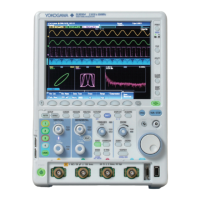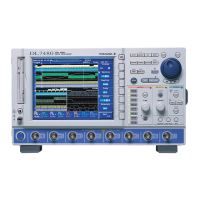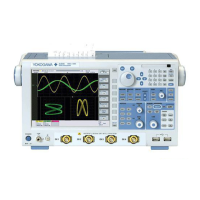5-83
IM 710105-17E
Commands
5
5.9 CURSor Group
:CURSor?
Function Queries all cursor measurement settings.
Syntax
:CURSor?
:CURSor[:TY]?
Function Queries all cursor settings.
Syntax
:CURSor[:TY]?
:CURSor[:TY]:DEGRee?
Function Queries all angle cursor settings.
Syntax
:CURSor[:TY]:DEGRee?
:CURSor[:TY]:DEGRee:ALL
Function Collectively turns on or off the measured values of
the angle cursor on the T-Y display.
Syntax
:CURSor:TY:DEGRee:ALL {<Boolean>}
Example
:CURSOR:TY:DEGREE:ALL ON
:CURSor[:TY]:DEGRee:D<x>?
Function Queries all angle cursor angle settings.
Syntax
:CURSor[:TY]:DEGRee:D<x>?
<x> = 1 or 2
:CURSor[:TY]:DEGRee:D<x>:STATe
Function Sets or queries the on/off status of an angle cursor
angle.
Syntax
:CURSor[:TY]:DEGRee:D<x>:STATe {<Bool
ean>}
:CURSor[:TY]:DEGRee:D<x>:STATe?
<x> = 1 or 2
Example
:CURSOR:TY:DEGREE:D1:STATE ON
:CURSOR:TY:DEGREE:D1:STATE?
-> :CURSOR:TY:DEGREE:D1:STATE 1
:CURSor[:TY]:DEGRee:D<x>:VALue?
Function Queries an angle cursor angle.
Syntax
:CURSor[:TY]:DEGRee:D<x>:VALue?
<x> = 1 or 2
Example
:CURSOR:TY:DEGREE:D1:VALUE?
-> :CURSOR:TY:DEGREE:D1:VALUE−120.00
000E+00
:CURSor[:TY]:DEGRee:DD?
Function Queries all of the settings for the angle difference
between the angle cursors.
Syntax
:CURSor[:TY]:DEGRee:DD?
:CURSor[:TY]:DEGRee:DD:STATe
Function Sets or queries the on/off status of the angle
differencevalueΔD,whichismeasuredbetween
the angle cursors.
Syntax
:CURSor[:TY]:DEGRee:DD:STATe {<Boolea
n>}
:CURSor[:TY]:DEGRee:DD:STATe?
Example
:CURSOR:TY:DEGREE:DD:STATE ON
:CURSOR:TY:DEGREE:DD:STATE?
-> :CURSOR:TY:DEGREE:DD:STATE 1
:CURSor[:TY]:DEGRee:DD:VALue?
Function QueriestheangledifferencevalueΔD,whichis
measured between the angle cursors.
Syntax
:CURSor[:TY]:DEGRee:DD:VALue?
Example
:CURSOR:TY:DEGREE:DD:VALUE?
-> :CURSOR:TY:DEGREE:DD:VALUE 180.000
00E+00
:CURSor[:TY]:DEGRee:DV?
Function QueriesallofthesettingsfortheΔVvalue,which
is measured between the angle cursors.
Syntax
:CURSor[:TY]:DEGRee:DV?
:CURSor[:TY]:DEGRee:DV:STATe
Function Setsorqueriestheon/offstatusoftheΔVvalue,
which is measured between the angle cursors.
Syntax
:CURSor[:TY]:DEGRee:DV:STATe {<Boolea
n>}
:CURSor[:TY]:DEGRee:DV:STATe?
Example
:CURSOR:TY:DEGREE:DV:STATE ON
:CURSOR:TY:DEGREE:DV:STATE?
-> :CURSOR:TY:DEGREE:DV:STATE 1
:CURSor[:TY]:DEGRee:DV:VALue?
Function QueriestheΔVvalue,whichismeasuredbetween
the angle cursors.
Syntax
:CURSor[:TY]:DEGRee:DV:VALue?
Example
:CURSOR:TY:DEGREE:DV:VALUE?
-> :CURSOR:TY:DEGREE:DV:VALUE 6.25000
00E−03
:CURSor[:TY]:DEGRee:JUMP
Function Makes an angle cursor in the T-Y display jump to
the specified zoom waveform.
Syntax
:CURSor[:TY]:DEGRee:JUMP {C1_Z1|
C1_Z2|C2_Z1|C2_Z2}
Example
:CURSOR:TY:DEGREE:JUMP C1_Z1
Description Jumps to the center of the zoom waveform. C1
and C2 are used to indicate Cursor1 and Cursor2.
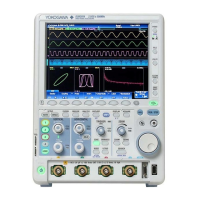
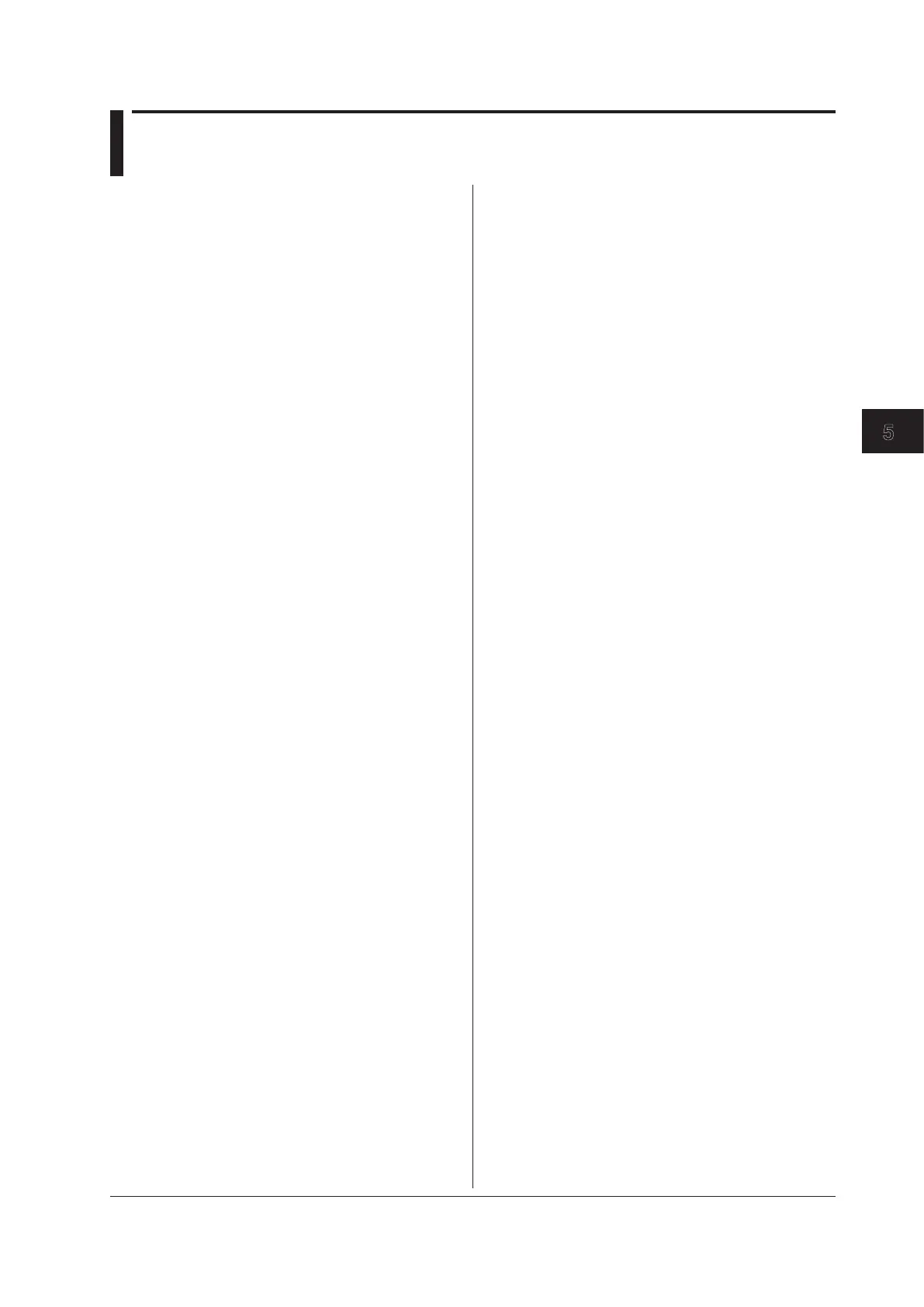